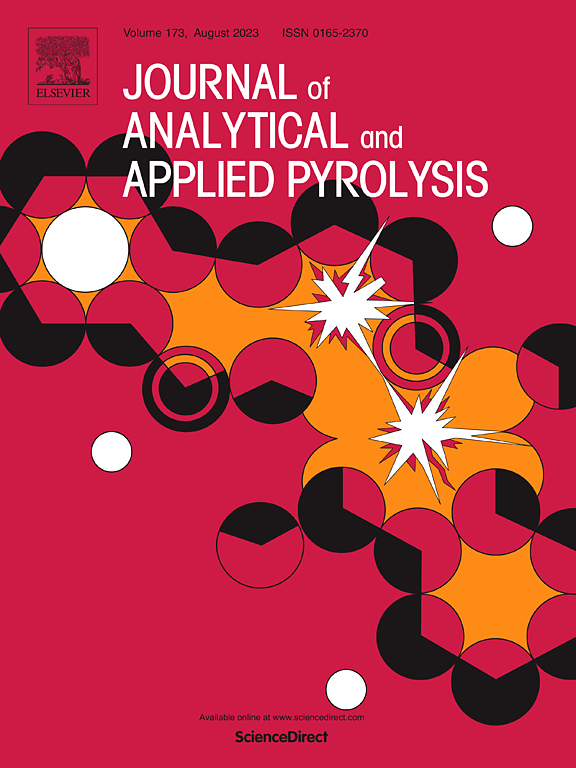Pyrolysis mechanism of palmityl alcohol: combined with experiments, reaction molecular dynamics, and density functional theory simulation
IF 5.8
2区 化学
Q1 CHEMISTRY, ANALYTICAL
引用次数: 0
Abstract
Long-chain fatty alcohols (LCFAs) are often utilized as sustainable organic phase change materials in thermal energy storage systems, owing to their excellent biodegradability. However, in the medium and high temperature energy storage systems, these materials may undergo thermal decomposition at high temperatures, which challenges their safe application in high-temperature energy storage systems. In this study, the pyrolysis behavior of palmityl alcohol was investigated using thermal analysis experiments, DFT calculation, and ReaxFF-MD simulation. The experimental results revealed that the kinetic model of palmityl alcohol pyrolysis was governed by a three-dimensional phase boundary, with an average apparent activation energy of 105 kJ/mol. The main products of palm alcohol pyrolysis include C2H4, CH4, H2, C2H2, CO2, and H2O. The simulation results showed that the thermal decomposition of palmityl alcohol initiated with the dissociation of C-C bonds and the dehydration condensation of terminal hydroxyl groups. Furthermore, the hydrogen extraction reaction was enhanced by the formation of stable products such as methane and hydrogen, generated through the interaction of carbonyl oxygen radicals and propenyl radicals from the rearrangement of C![]() O bonds. This study provides theoretical support for the safe application of LCFA in high-temperature environments.
O bonds. This study provides theoretical support for the safe application of LCFA in high-temperature environments.
求助全文
约1分钟内获得全文
求助全文
来源期刊
CiteScore
9.10
自引率
11.70%
发文量
340
审稿时长
44 days
期刊介绍:
The Journal of Analytical and Applied Pyrolysis (JAAP) is devoted to the publication of papers dealing with innovative applications of pyrolysis processes, the characterization of products related to pyrolysis reactions, and investigations of reaction mechanism. To be considered by JAAP, a manuscript should present significant progress in these topics. The novelty must be satisfactorily argued in the cover letter. A manuscript with a cover letter to the editor not addressing the novelty is likely to be rejected without review.

 求助内容:
求助内容: 应助结果提醒方式:
应助结果提醒方式:


